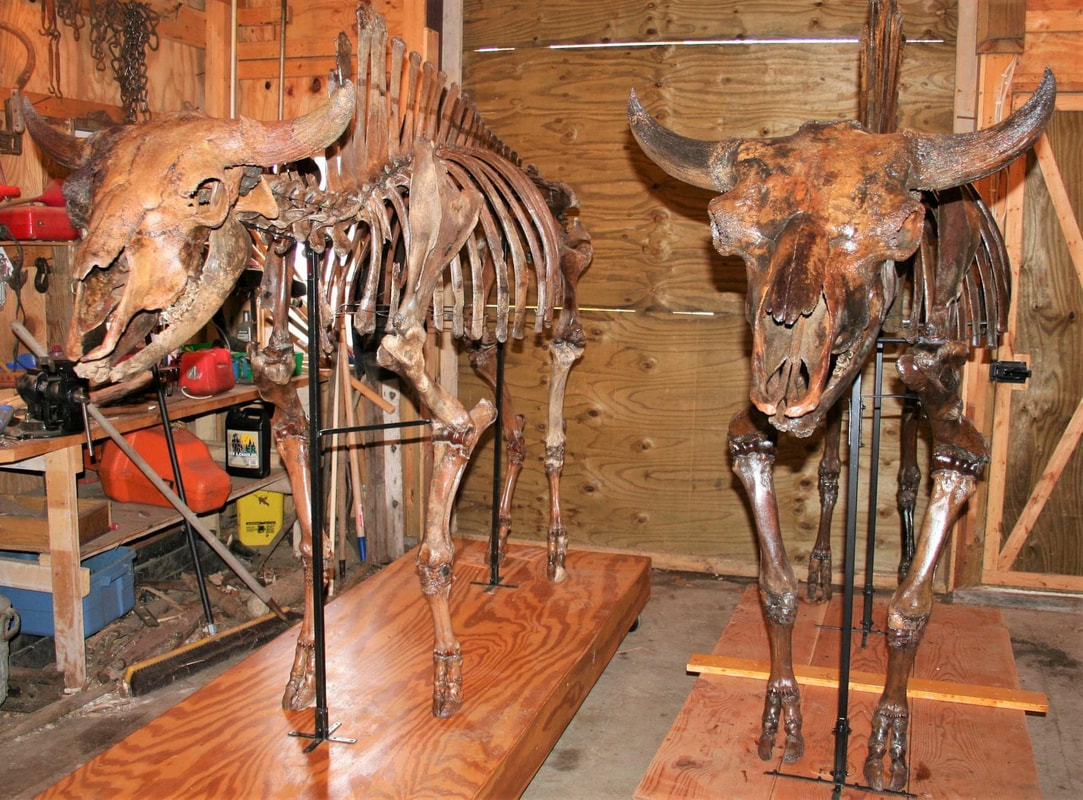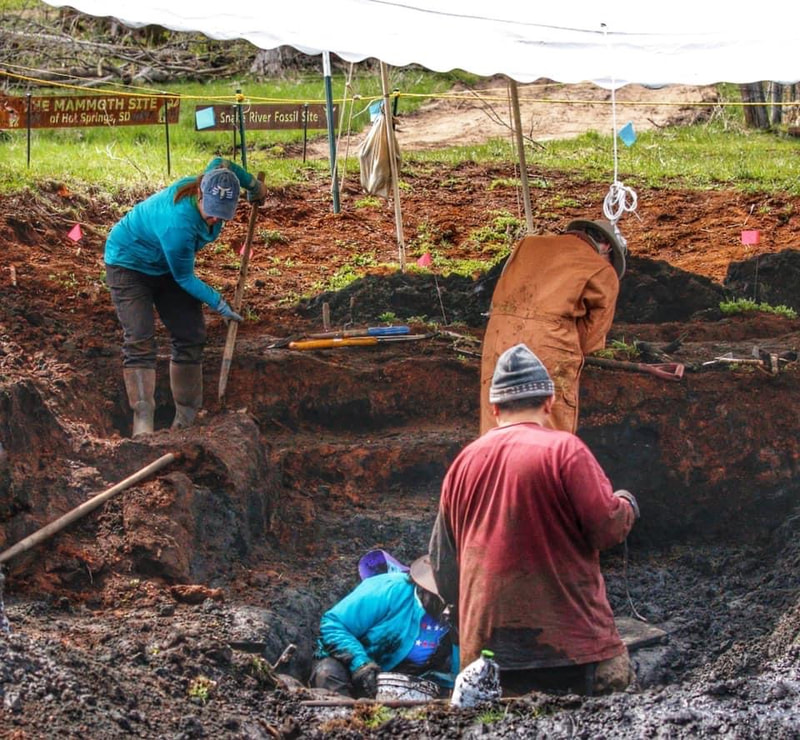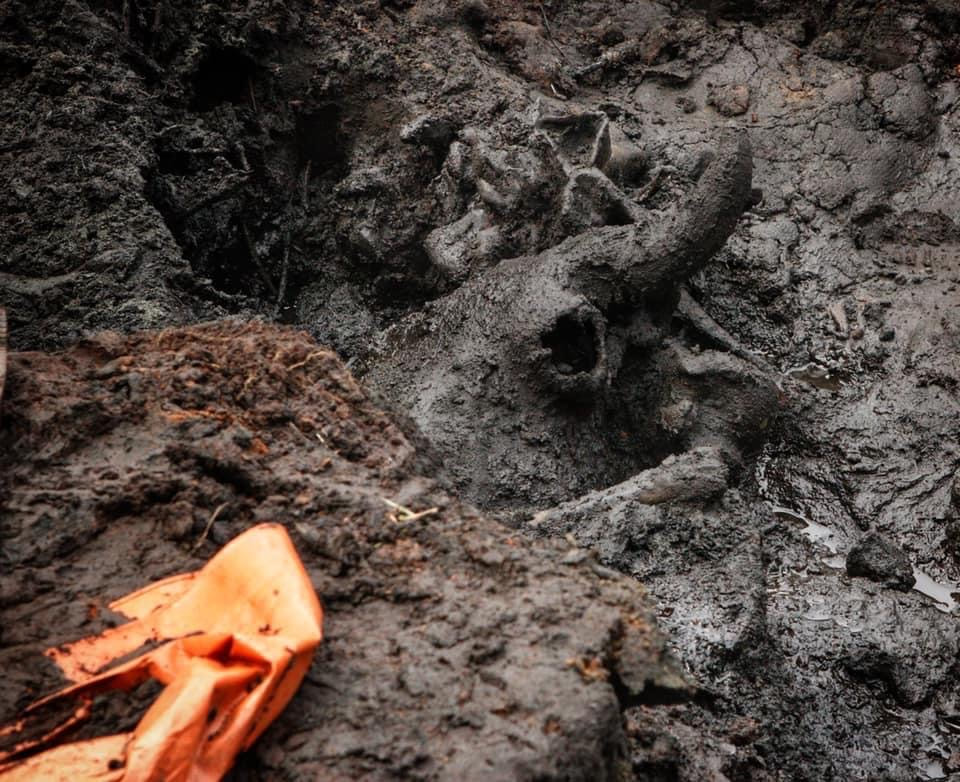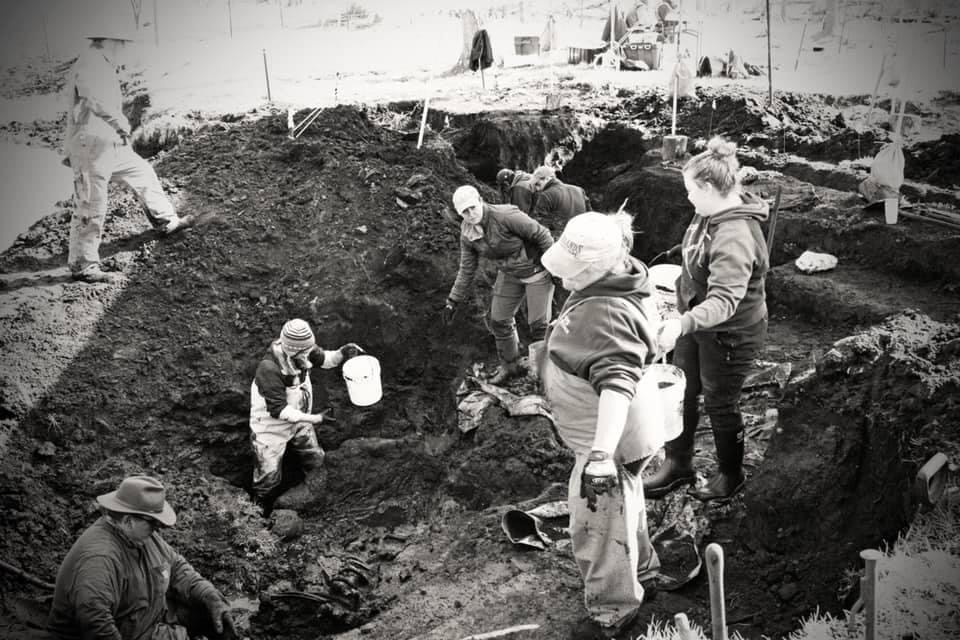|
The Anoka Sand Plain was deposited by melting glaciers about 12,000 years ago. Most of Sherburne County is in the Anoka Sand Plain. Since the retreat of the glaciers, climate and vegetation have produced many marshy areas. These marshes and swamps frequently have deposits of peat and silt that are in some places are six feet deep or more.
American Bison, commonly called buffalo lived in the mixed prairie and woodlands of Sherburne County for thousands of years. Bison bones and the bones of other large animals are frequently found in the peat of the Sand Plain. A Sherburne County “dig” supervised by Dr. Stanley Lewis of Saint Cloud State University in 1984 revealed a substantial number of bones and bone fragments mixed throughout a cross section of peat. Although bones of many different animals and fish were found, bison bones were the most common. Bison bones are more likely to be found for at least two reasons. Bison often existed in large numbers and bison are big, so their bones are naturally thick, which causes the bones to last a long time in the earth. In most cases, the bones are found one at a time and spread throughout a relatively large volume of peat. This makes it difficult or impossible to reassemble one individual animal. Several complete and nearly complete skeletons have been discovered on the Snake River Farm owned by Tom Barthel and Gail Wilkinson. These skeletons are in sand below peat. The animals are in positions that imply that they died struggling to escape quicksand. The bison skeletons are in remarkably good condition. Soft tissues like hide, muscle, organs, horn shells, and hooves have been dissolved. However, virtually all the bones and some hard collagen tissues like spinal discs, the meniscal pads of major joints and the thin bony elements of the skull interior have been preserved. The majority of the more complete animals are relatively large. A typical skeleton would have belonged to an animal that stood well over six feet tall at the shoulders and had a tip-to-tip horn span of thirty-one inches. These bison are about 25% larger than modern bison. Major skull fragments of a much larger bison whose horn cores are 50% larger have also been found. The location of the animals below the peat suggests that they died 8,000 to 10,000 years ago, before the peat was laid down. The bison may have been driven to what was then a low area by fire or storm, with a number of animals dying in a single event. Alternatively, they may have wandered into an area of sand that had been super saturated by heavy rain or they may have broken through thin ice. So far, there are no strong clues either way. Some peat-like organic material has been found under a couple of the skeletons indicating that the area was in the early stages of becoming a marsh when the bison were trapped. No signs of predation by other animals or humans have been found; further supporting the theory that the animals were in what was at least temporarily an inaccessible area when they lost their lives. The bones are black or very dark which is typical of bones that have been buried under peat for a long time. The Barthels assembled a complete skeleton of a mature cow in 1998. The bison cow has a 28-inch horn span and measures about six feet high at the tallest thoracic vertebra (the hump.) She is named Samantha and resides at the Becker Public Library. This skeleton is unique as virtually all of the bones are from the same animal. One rib shows the effect of being broken and subsequent healing. The break probably occurred in a dispute with another bison. Before assembling Samantha, Barthel and Wilkinson visited numerous museums including the Smithsonian to learn how other similar animals were assembled and fixed in place. The general technique that Barthel used was to fix and mount the spine on small metal posts and then to loosely attach the pre-assembled legs and skull to the spine. Hot melt glue is used in the joints to replicate the meniscus that has decayed away. Black wire of various small diameters and black self-tapping screws were used to hold the joints together. The resulting skeleton is both flexible and rugged. Samantha has held up very well to nearly a decade in the Becker Public Library with only an occasional minor repair or adjustment. She is accessible to the children who visit the library and gets “touched” daily. A second bison skeleton was assembled in 2006 at the request of the Sherburne County Historical Society. This bison is named Tatonka. Tatonka has about 70% of his original bones. Some of Tatonka’s bones were replaced with others of higher quality to produce a better specimen. Tatonka is on permanent display in the main hall of the museum. There are several places on the Snake River Farm where individual bones or bone fragments can be easily found. Barthel and Wilkinson occasionally host school or youth groups for a “dig.” In those cases, the children each take a bone fragment home.
1 Comment
|
Categories
All
Archives |




 RSS Feed
RSS Feed
